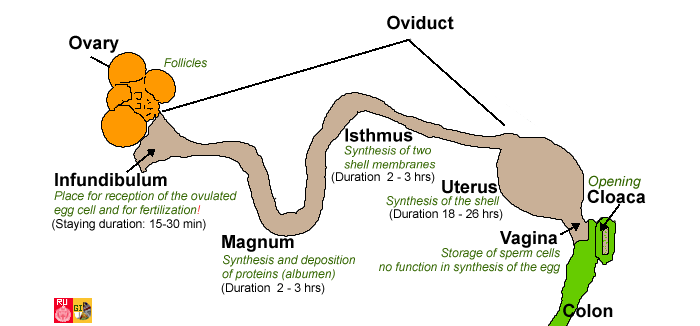
The process of egg formation in a hen is a fascinating biological process that takes place within the female reproductive system. Here’s an overview of how a hen produces an egg:
1. Ovulation
The process begins with ovulation, where the hen’s ovaries release a mature ovum (yolk). Hens typically have a finite number of ova in their ovaries, and one is released approximately every 24 to 26 hours. The yolk is the nutrient-rich part of the egg that will nourish the developing embryo if fertilized.
2. Formation of the Egg White
Once the yolk is released, it travels down the oviduct, a long tube in the hen's reproductive system. The first section of the oviduct, called the infundibulum, is where the yolk is captured. This section is also where fertilization occurs if sperm from a rooster is present. After about 15-20 minutes in the infundibulum, the yolk moves to the next section, known as the magnum.
In the magnum, the albumen (egg white) is added. This layer is primarily made up of water and proteins, providing cushioning and protection for the yolk. The albumen forms around the yolk as the yolk moves through the magnum over a period of about three hours.
3. Formation of the Membranes
Next, the egg moves into the isthmus, where the inner and outer shell membranes are formed. This process takes about 1-2 hours. These membranes help protect the egg and prevent the entry of bacteria.
4. Shell Formation
The egg then enters the uterus (also called the shell gland), where it spends the most time—about 18-26 hours. Here, the calcium carbonate shell is formed. The hen's body secretes calcium from her bones, which crystallizes to create the hard outer shell. The shell is important for protecting the contents of the egg and providing structure.
5. Laying the Egg
Once the shell is fully formed, the egg is ready to be laid. The hen's muscles contract to push the egg out of the cloaca, which is the common exit for eggs, waste, and other bodily fluids. The entire process, from ovulation to laying, typically takes about 24-26 hours.
Conclusion
Egg production in hens is a complex and efficient biological process that highlights the incredible reproductive capabilities of birds. While most hens can lay eggs without a rooster, fertilized eggs will develop into chicks if they are incubated properly. The unfertilized eggs that are commonly found in grocery stores are a product of this natural process and serve as a vital source of nutrition for many people around the world.
Upvoted. Thank You for sending some of your rewards to @null. Get more BLURT:
@ mariuszkarowski/how-to-get-automatic-upvote-from-my-accounts@ blurtbooster/blurt-booster-introduction-rules-and-guidelines-1699999662965@ nalexadre/blurt-nexus-creating-an-affiliate-account-1700008765859@ kryptodenno - win BLURT POWER delegationNote: This bot will not vote on AI-generated content